王子公園 (おうじこうえん - Ouji kouen - Oji Park)
王子公園 (literally "Prince Park") is a suburb in 神戸 (こうべ - Kobe), a few stops from the city centre on the 阪急 (はんきゅう - Hankyu) train line. At any other time of year it's a pleasant but rather unremarkable area, but during 花見 season it's flooded with 桜 and people chasing them. The park itself joins to 王子動物園 (おうじどうぶつえん - ouji doubutsuen - Oji Zoo), which is one of the biggest zoos in the prefecture. Some nice views are available in the surrounding area, but for the full 花見 experience it's best to head into the 動物園 proper.
The central area of the 動物園 becomes a makeshift picnic spot during 花見, where people will spread their tarpaulins across park benches, pavements and grass and sit down for lunch amongst the 桜. What makes the experience different is that this area surrounds the elephant enclosure, meaning you can enjoy your 弁当 (べんとう - bento - packed lunchbox) in good company. There are no high fences around the enclosure which affords the elephants a completely unobstructed view of the 桜, but they never seem that interested. They probably remember them from last year.
That's not to say the 動物園 is the only part of 王子公園 that offers nice views - cherry trees flank many of the streets, creating canopies of 桜 that you can drive or walk down. The appropriately named 桜トンネル (sakura tonneru - cherry blossom tunnel) shown above is probably the most famous of these and is absolutely gorgeous.
姫路 (ひめじ - Himeji)
The grounds of 姫路城 (ひめじじょう - himejijou - Himeji Castle) are traditionally one of the most popular spots in 兵庫. Most times I would recommend having a look, even just for the sake of seeing a stereotypical 花見 - thousands of people sprawled out over the ground having a great time and generally not paying much attention to anything else. There's a proverb about this time of year that says "花より団子" - (はなよりだんご - hana yori dango - "dumplings more than flowers"), which pokes fun at people caring more about the food than the 桜; I think whoever wrote that had just come back from a trip to 姫路.
The surging crowds mean that you're well looked after with food and organised entertainment, and the 桜 skirting the main area of the park are lovely if you can squeeze your way out to appreciate them. The bad news is that the main drawcard has been taken out of commission - 姫路城 is now covered over which takes away from the stunning view that you could otherwise enjoy. In a few years you'll be able to enjoy the full 花見 experience in 姫路 again, but until then you'll just have to use your imagination.
夙川公園 (しゅくがわこうえん - shukugawa kouen - Shukugawa Park)
Between 神戸 and 大阪 (おおさか - Osaka) lies an area of 西宮 (にしのみや - Nishinomiya) called 夙川 (しゅくがわ - Shukugawa), named after the river that runs through it. 夙川公園 stretches along the banks of the river, playing host to hundreds of people who nest themselves under the numerous 桜 and scarcely move for the rest of the day.
The nature of your 花見 experience really depends on who you're with - a party can range from a family or a few friends sharing a picnic rug and an esky to a full blown company-wide bash. Some people bring trestle tables, portable barbeques or even fridges; I thought I had seen it all until I came across one group setting up an electric beer machine next to their tarpaulin. In any case, the good spots fill up quickly; it doesn't take long for the real estate to disappear, even though it stretches for hundreds of metres.
At the big 花見 spots, you needn't worry about running out of food or drinks - there's always an abundance of festival goodies at hand. Anything you can put on a stick or eat with one hand will be available, from 焼き鳥 (やきとり - yakitori - grilled chicken skewers) and たこ焼き (たこやき - takoyaki - octopus balls) to りんごあめ (ringoame - toffee apples) and 桜 flavoured アイスクリーム (ice cream). In most cases they also sell お酒 (おさけ - osake - alcohol) which can be freely consumed under the trees by those who have been around for at least twenty 花見.
Not everyone is up for a big party of course - provided they can get away from some of the noisier revelry, the delicate tranquility of the river is a perfect place for singles and couples to contemplate the profound transience of the 桜. The wind stirs the trees and their reflection, a few flowers glide down the surface of the water and within a fortnight, it's like none of them were ever there. It's probably best not to think too much about this - it's the most depressing metaphor for youth I can imagine.
Wherever you end up in the prefecture and however you spend 花見, you'll have to agree that this is a special time of year. While out and about in 兵庫 you might be quietly reflecting on the passing year or seeing it out with a bang but in either case, it'll be hard to keep much of a grip on your worries. 春休み (はるやすみ - haru yasumi - Spring holidays) finished yesterday, which means that for a lot of people, today is a fresh start. Good luck to everyone in Japan for the 2011 school year - I hope it's everything you imagined under the 桜.
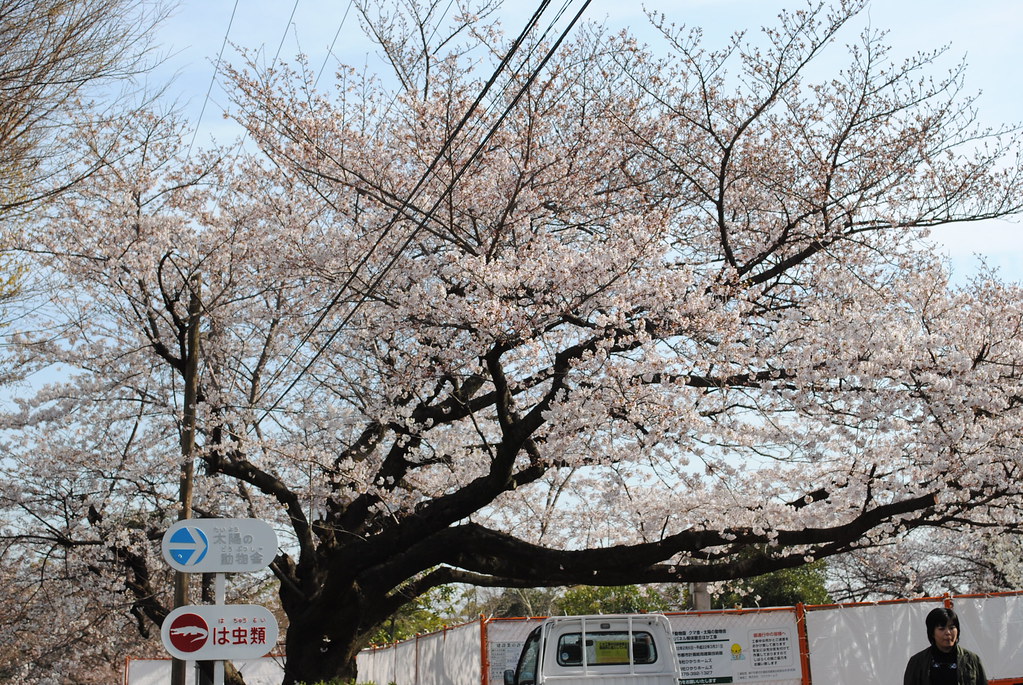

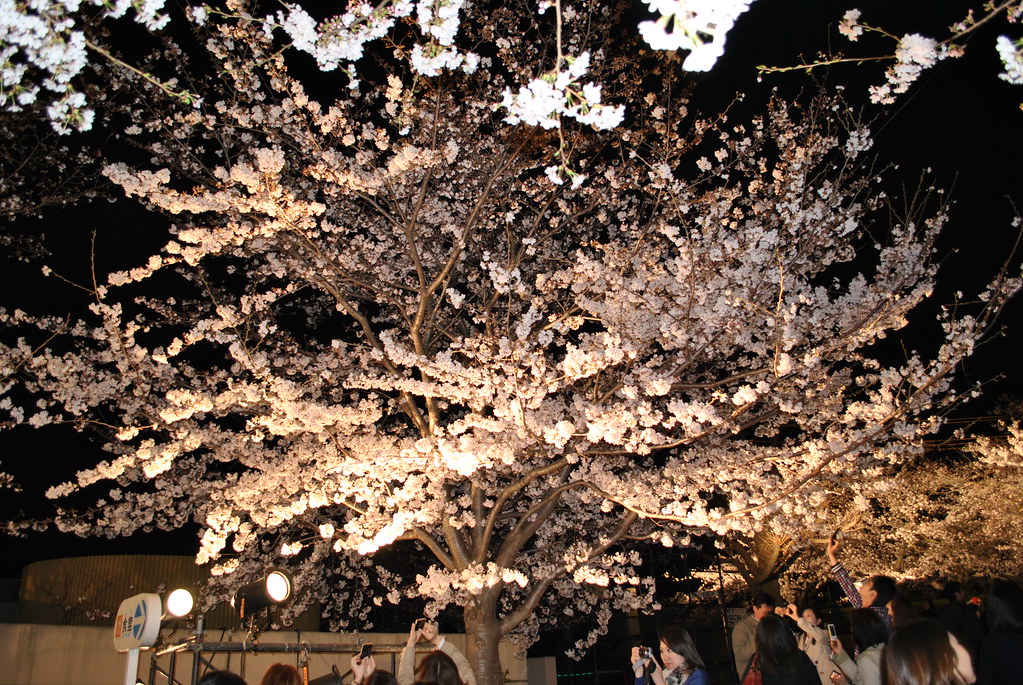
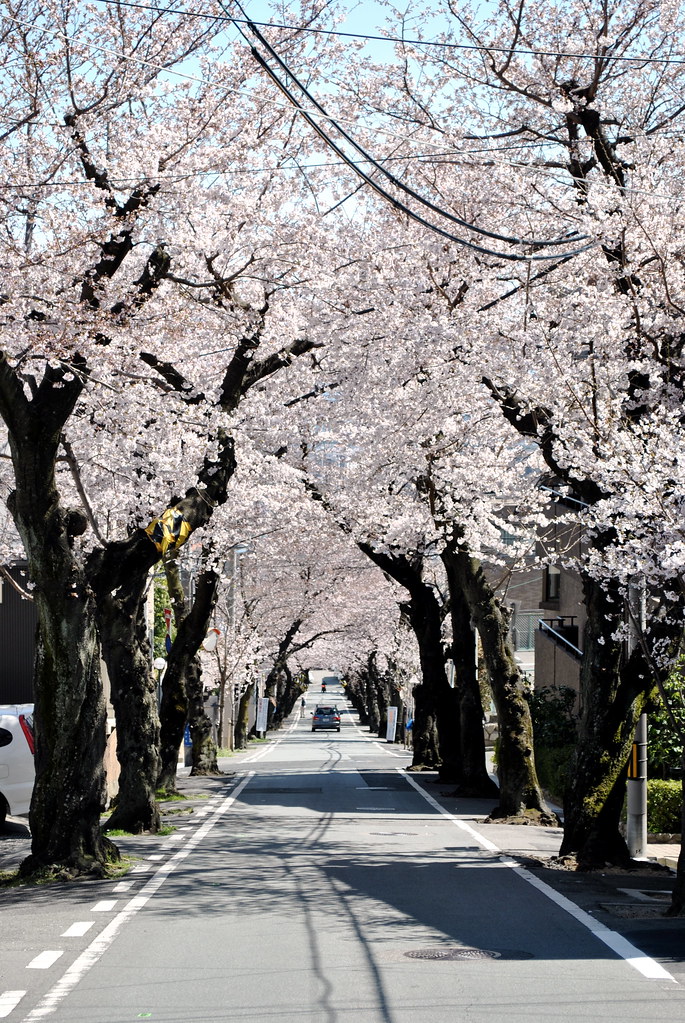
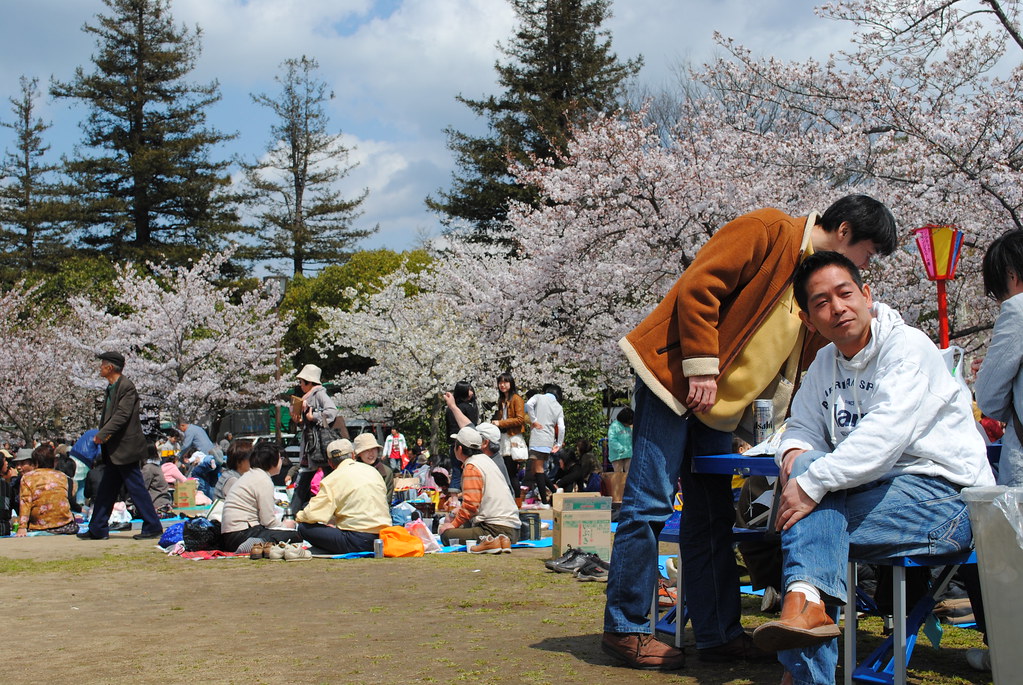


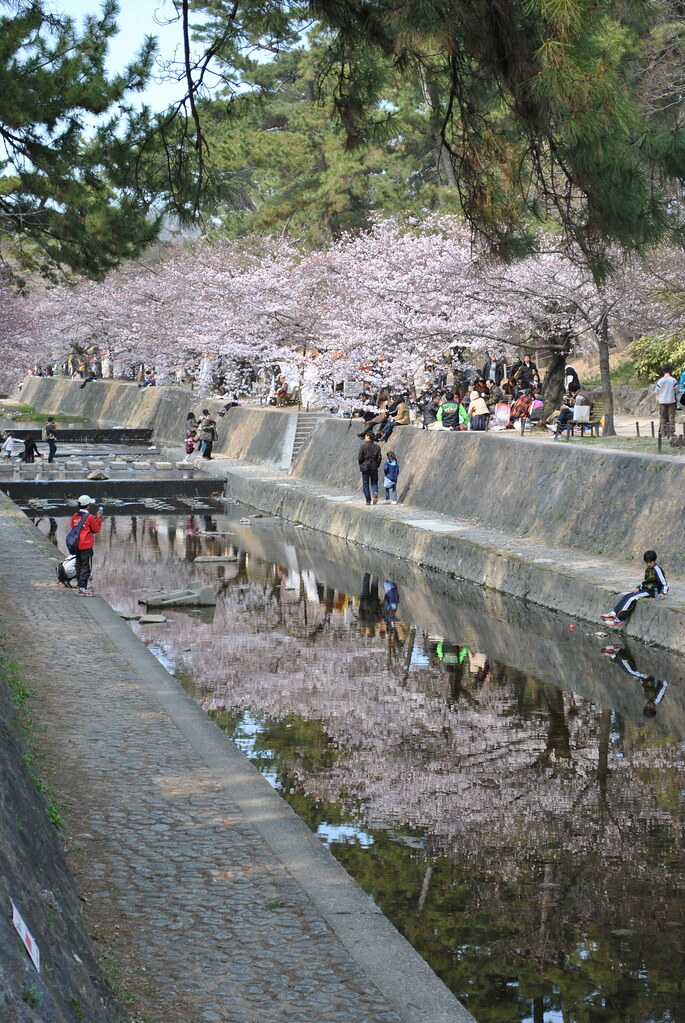

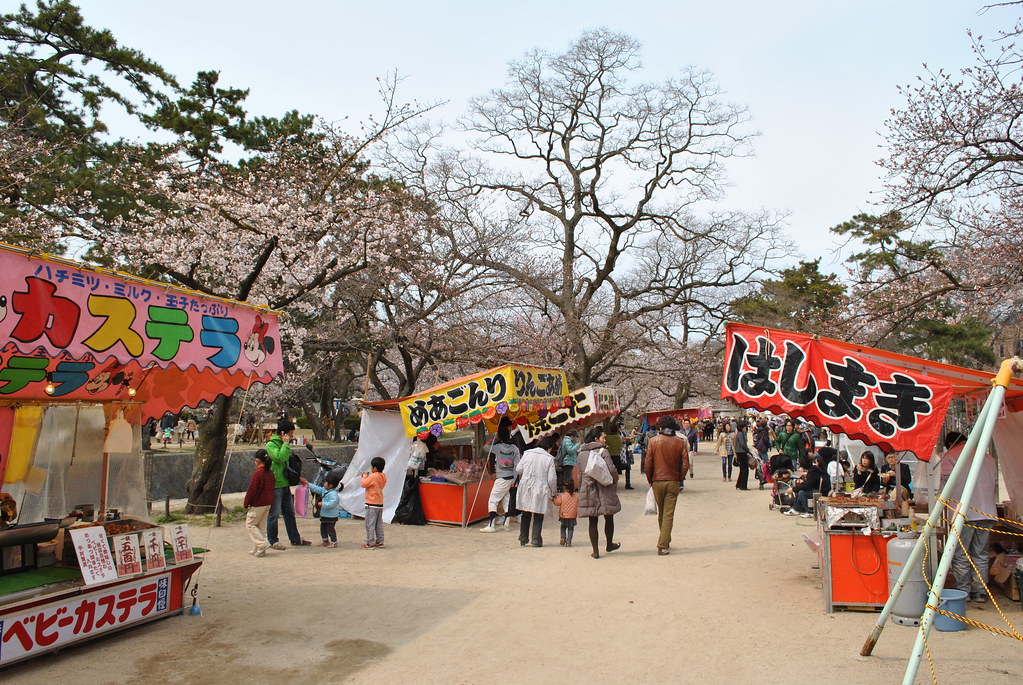
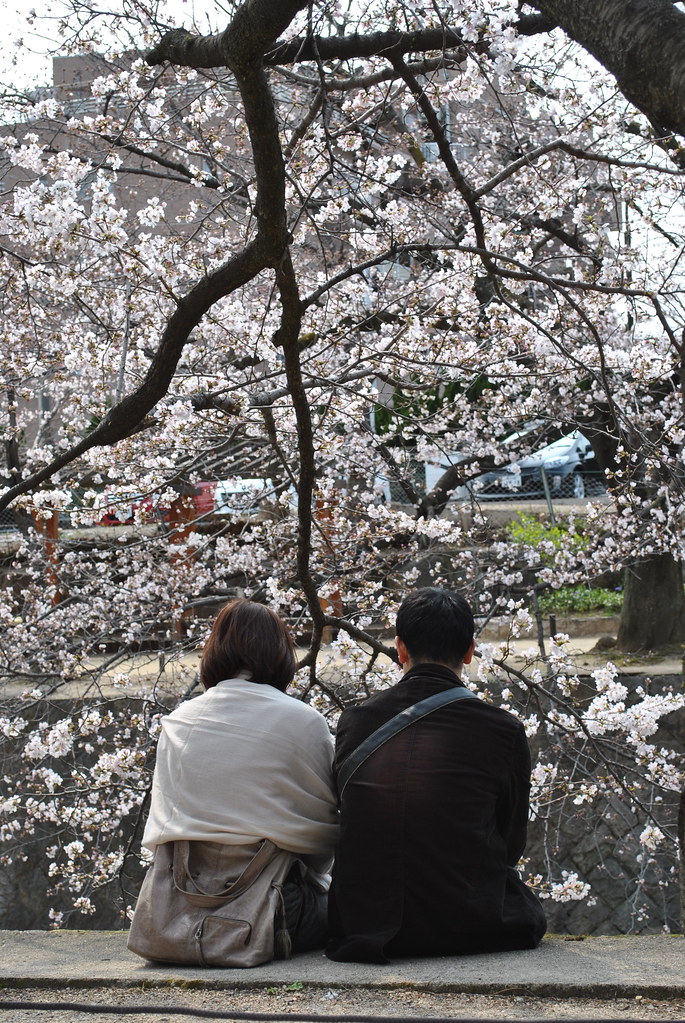
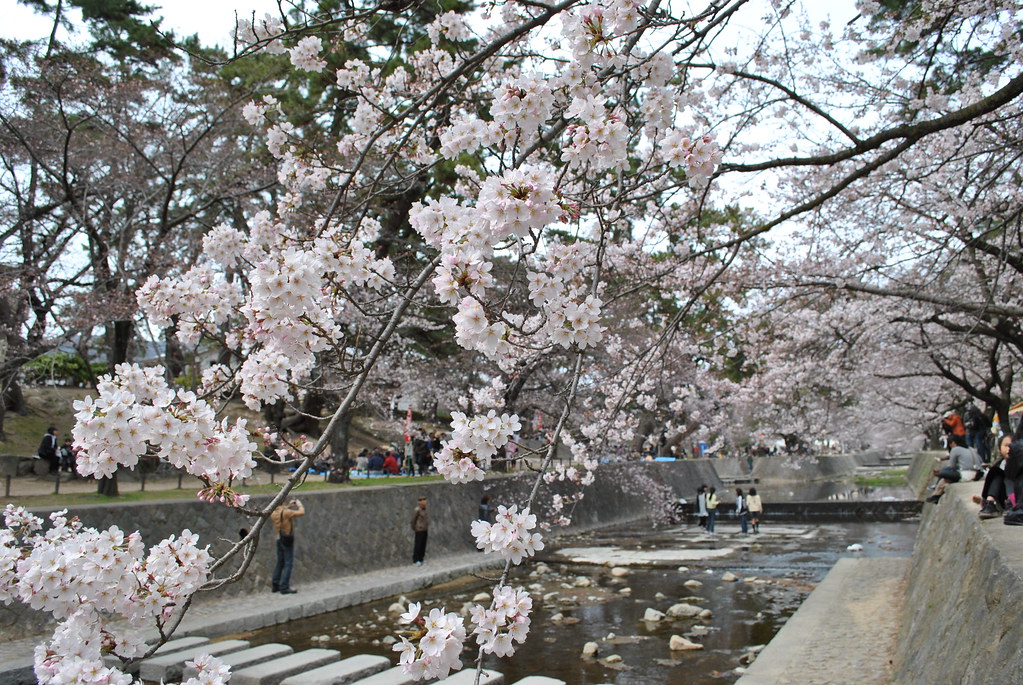
If you want to track the progress of the 桜 for 2011, there are numerous maps that show what stage the blooms are at in each area of Japan and the best dates to visit.
ReplyDeleteWhole of Japan:
http://sakura.weathermap.jp/
http://www.mapple.net/sp_sakura/
兵庫 area:
http://sakura.yahoo.co.jp/spot/list/28.html